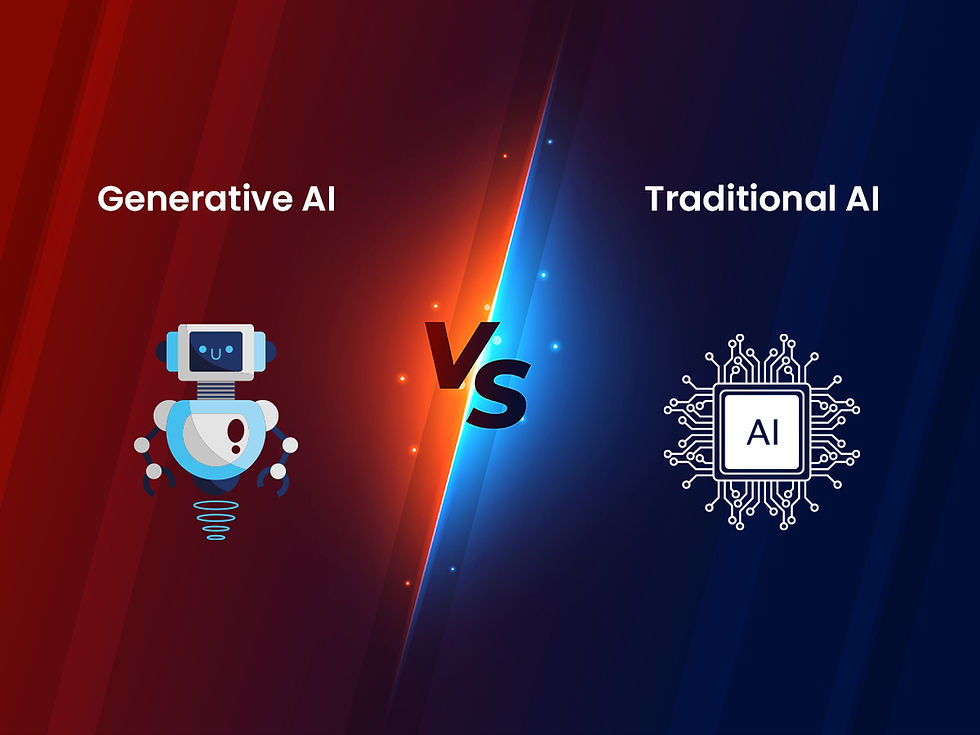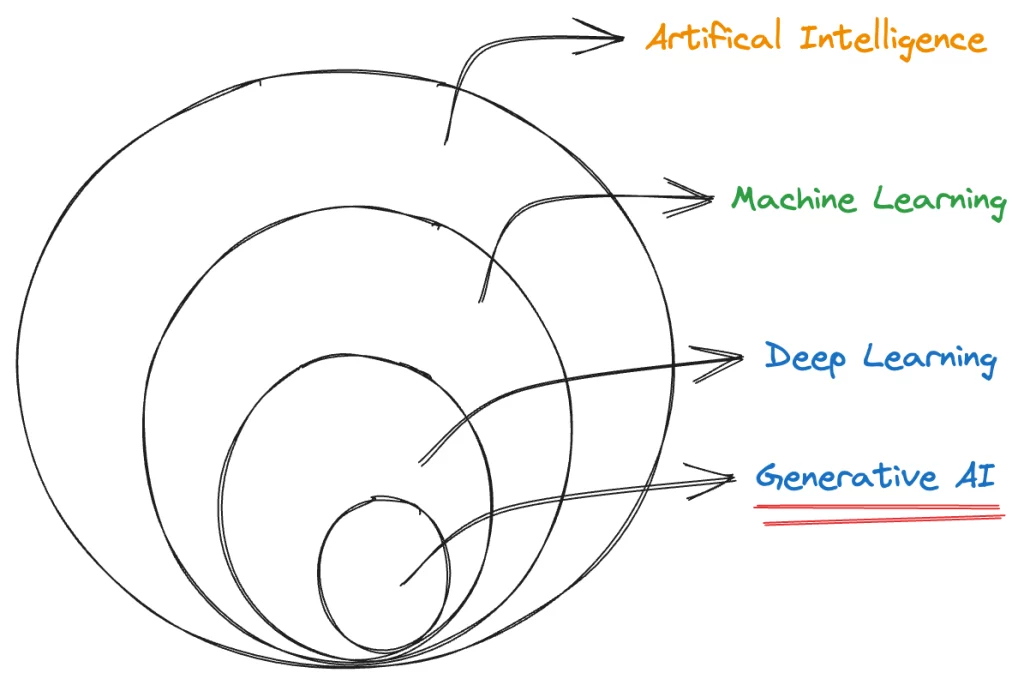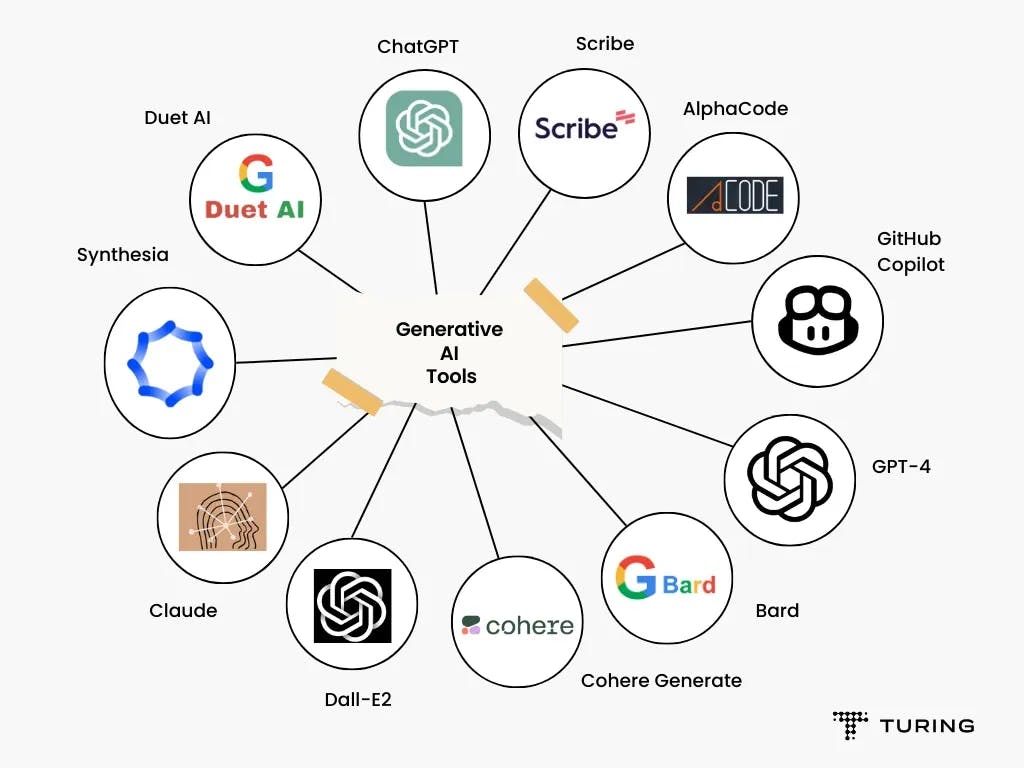Traditional vs. Generative AI: More about Generative AI
 Muhammad Fahad Bashir
Muhammad Fahad Bashir
Artificial Intelligence (AI) has revolutionized various aspects of our lives, from automating tasks to providing intelligent insights. Traditionally, AI systems have been built on specific rules and trained to deduce answers and responses based on the data they have. However, the advent of Generative AI (Gen AI) has introduced a new paradigm in AI, one that can generate new content, ideas, images, videos, and more. This article delves into the differences between Traditional AI and Generative AI, explores the types of Generative AI, and discusses their transformative impact.
Traditional AI: Rule-Based Intelligence
Traditional AI, often referred to as narrow AI or weak AI, operates within a predefined set of rules and constraints. It relies heavily on the data fed into it and cannot generate new knowledge beyond what it has been explicitly programmed to understand.
Characteristics of Traditional AI:
Rule-Based Systems: Traditional AI systems follow specific rules and logic defined by humans. They excel in tasks where the rules are well-defined and do not change over time.
Data-Dependent: These systems can deduce answers and make decisions based on the data they have been trained on. If the data is incomplete or lacking in variety, the AI’s performance is limited.
Limited Adaptability: Traditional AI cannot adapt or generate new solutions to problems outside its training data. It is like a child who can only perform tasks they have been explicitly taught.

Example:
Consider two children: one who only follows direct instructions ("I will do only what you say") and another who is resourceful and can find solutions independently ("Give me the task and I will do it"). If you ask the first child to bring water, they will only do so if they know where the water is. In contrast, the second child will find a way to bring water, even if it means going outside to fetch it. Traditional AI is like the first child—limited by its predefined knowledge and rules.
Generative AI: A New Paradigm in AI
Imagine a world where your virtual assistant doesn't just follow your commands but also anticipates your needs, generates creative content and provides personalized advice. Welcome to the era of Generative AI, where the possibilities are boundless, and the limitations of Traditional AI are a thing of the past.
Generative AI is changing everything. Unlike Traditional AI, Generative AI can create new content, generate innovative ideas, and produce images and videos by learning from vast amounts of training data. It is not constrained by predefined rules and can adapt to new situations by leveraging its understanding of various contexts.
Characteristics of Generative AI:
Content Generation: Generative AI can create new text, code, images, audio, and videos. It learns patterns from the training data and generates original content that was not explicitly programmed.
Personalization: It can tailor responses and generate content based on personalized inputs. For example, it can explain a concept in simple terms for a child or provide a detailed, technical explanation for a Ph.D. student.
Adaptability: Generative AI can respond creatively to new challenges, making it highly versatile and powerful.
Example:
Using the previous scenario, Generative AI is like the second child who not only understands the task but can also figure out how to accomplish it, even if it means finding new ways or resources.
Why Generative AI is a Game Changer
Let's build a story to understand about traditional ai and generative ai .
Consider Sarah, a marketing professional, juggling multiple projects. With Traditional AI, she could automate repetitive tasks, but it wasn't enough to keep up with the creative demands of her job. Enter Generative AI. Now, Sarah uses an AI tool that not only automates her tasks but also generates innovative marketing campaigns, suggests personalized content for her clients, and even drafts engaging blog posts. Her productivity has skyrocketed, and her clients are more satisfied than ever. Generative AI didn't just make her work easier; it made it smarter and more impactful.
Generative AI is transforming various fields due to its ability to:
Improve Efficiency: By automating complex tasks, it speeds up processes that previously required significant human effort.
Generate New Ideas: It can create unique content and solutions, fostering innovation.
Personalized Responses: Generative AI can tailor its output to the user’s needs, making it highly adaptable across different domains.

Categories of Generative AI
Generative AI can be broadly classified into four main categories, each with its own set of applications and capabilities:
Text and Code Generation: This category includes models that generate text or code, such as chatbots, virtual assistants, and code completion tools.
Image and Video Generation: Models in this category can create or manipulate images and videos, leading to applications in content creation, virtual reality, and more.
Audio Generation: These models can generate or enhance audio content, including music, speech synthesis, and sound effects.
Predictive Analysis and Insights: This involves using generative models to analyze data and provide predictions and insights.
Below are some of the in-demand generative ai tools in the market. Image Credit :
Common Applications
Content Generation: Creating articles, reports, marketing content, and more.
Chatbots and Virtual Assistants: Providing customer support and engaging with users.
Image and Audio Generation: Creating visual and auditory content for various media.
Predictive Analysis: Offering insights and forecasting trends based on data.
Code Completion and Generation: Assisting developers by generating code snippets or entire programs.
Product Recommendation and Marketing Messages: Personalizing user experiences and marketing strategies.
Impact Across Industries
Generative AI is influencing nearly every industry. For example, few are
Transportation: Optimizing routes and automating logistics.
Healthcare: Assisting in medical research, diagnostics, and personalized treatment plans.
Retail: Enhancing customer experiences and inventory management.
Manufacturing: Improving production processes and predictive maintenance.
Telecommunications: Optimizing networks and enhancing customer service.
Agriculture: Enhancing crop management and predictive analytics.
Conclusion
Generative AI is not just an evolution but a revolution in the field of artificial intelligence. It transcends the limitations of Traditional AI by generating new and innovative content, adapting to various contexts, and offering personalized responses. With its transformative potential across industries, Generative AI is undoubtedly paving the way for a future where technology can think, create, and innovate alongside humans.
Subscribe to my newsletter
Read articles from Muhammad Fahad Bashir directly inside your inbox. Subscribe to the newsletter, and don't miss out.
Written by

